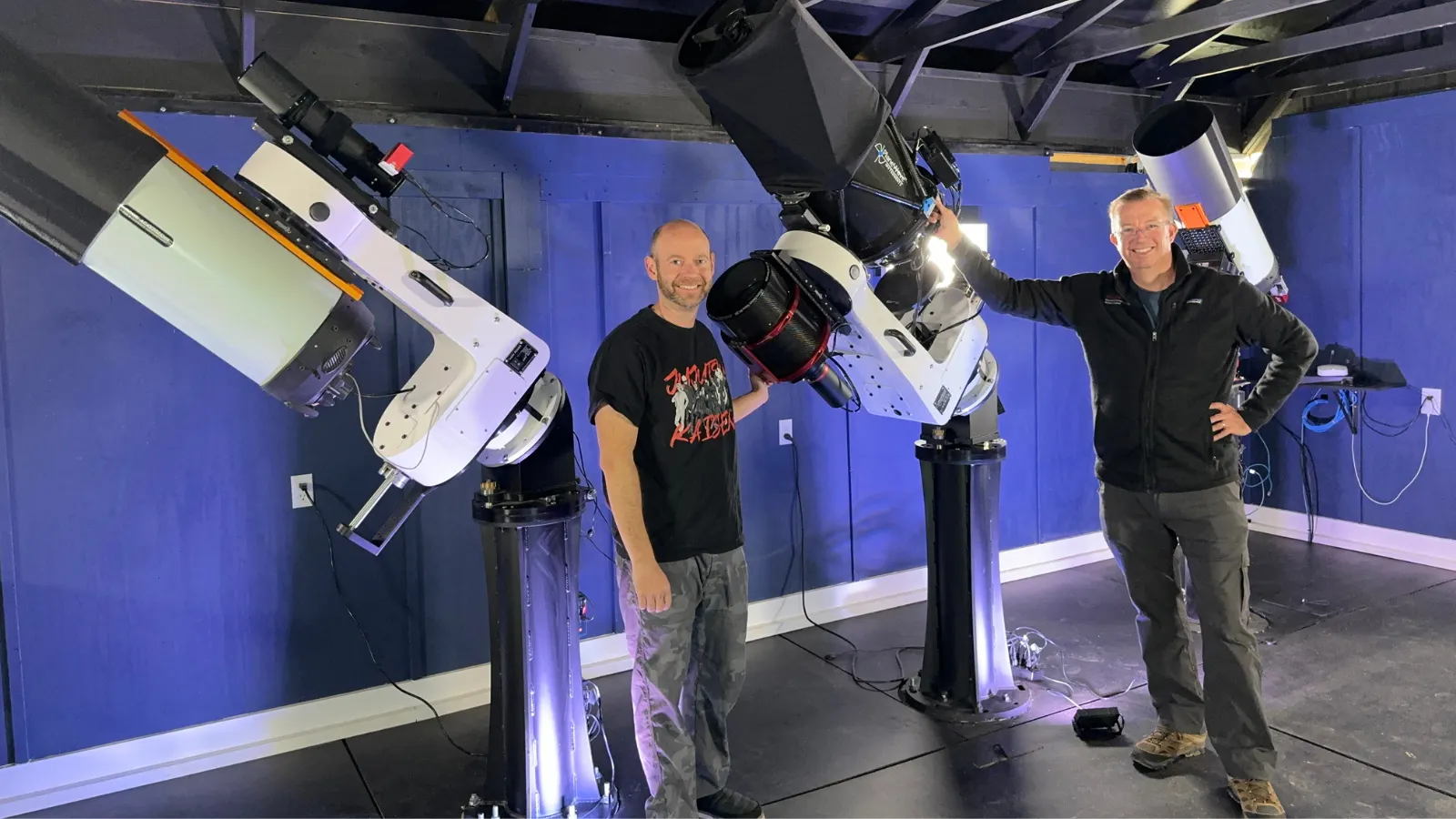OurSky, a Southern California-based technology company, wants to give amateur astronomers the tools they need to add artificial intelligence and open-source technology to their scans of the stars. On Monday, OurSky launched the beta version of its network of telescopes connected via API after raising close to $10 million in seed funding.
Founded in 2021 by Dan Roelker and Alex Hawkinson, Los Angeles-based OurSky recently announced the company closed a $9.5 million seed round with investments from Upfront Ventures, Oceans Ventures, Venrex Investment Management, Marlinspike Partners and Embedded Ventures.
“What OurSky has done is really unique—we made the sky respond to an API request,” OurSky co-founder and chairman Alex Hawkinon told Decrypt. “You can make an API request for data, have real-time information back very quickly from this global array of [telescopes], and then do things with it—and encourage developers to use those APIs to build all sorts of applications that are going to unlock the avalanche of data that we've got and huge opportunities.”
Open-source stargazing
“We both see this as not just one company’s show,” OurSky co-founder and CEO Dan Roelker told Decrypt. “We are both very big believers in having open platforms so people with ideas what type of AI models to build or what problems to solve could get access to that and use OurSky to build those types of activities and modeling.”
Open-source technology allows for collaborative development, where multiple contributors can add, modify, and improve software, which ideally leads to more robust, innovative, and widely used technologies.
Roelker explained that OurSky currently has 55 telescopes online across 20 locations to track objects in orbit around the Earth, Moon, and beyond. He said OurSky will encourage amateurs to join their network and share their data, which can be used for collective discoveries and tracking space debris.

“We're getting close to releasing our amateur plugins for some very popular open-source platforms so that we can have a lot of passionate amateur astronomers collaborating on citizen science, tracking things in space and different types of applications,” Roelker said.
Citizen scientists
Like the open source model, citizen science involves public collaboration in scientific research as a way to enhance data collection and analysis. By participating in citizen science projects, amateur astronomers can help scientists gather and analyze large amounts of data that might be difficult to process on their own.
While “citizen science” was coined in the 1990s, the public has participated in scientific research for decades. Examples of citizen science include a Canadian amateur radio operator, Scott Tilley, who spotted a long-lost or “zombie” satellite called IMAGE in 2018, allowing NASA to reestablish contact after losing contact more than a decade prior.
Between 2015 and 2016, citizen scientists reported 30 sightings of unusual purple lights in the sky. Enthusiasts dubbed the phenomenon Steve, which researchers with the Aurorasaurus project explained stood for Strong Thermal Emission Velocity Enhancement. Initially a mystery, Steve was later untangled through combined ground and satellite data, providing new insights into Earth's magnetic interactions.
“We built this platform that allows anyone for any usage like,” he said. Whether it was tracking a satellite or exploring the cosmos or understanding lunar orbits or exploring our solar system or all those things.
“We combined all of these—the community, the telescopes out there—and abstracted away the complexities of operating these telescopes and opened it up to this larger community to have 24/7 views of the sky, any direction you want, all the time,” he continued. “What kind of cool things could come out of that?”
OurSky offers four subscription tiers, with each tier increasing tracking capabilities and support. The free plan allows users to track two nightly objects, the starter at $2,500 per month for five nightly objects with user prioritization, the advanced tier for $5,000 per month for ten nightly objects with higher prioritization, and an enterprise tier for custom pricing for extensive tracking and 24/7 support.
OurSky’s goal, Roelker said, is to support the astronomy community by offering free access to important data and photographs, noting that astro-photographers often spend a lot of time processing images, which can be a cumbersome task.
Astronomy and artificial intelligence
While OurSky has plans to implement artificial intelligence into its platform, Hawkinon said OurSky has not yet implemented an AI integration—but said the company is looking to add an undisclosed AI model in early 2024.
With AI being used across industries, astronomers are looking to the emerging technology to create more robust and expansive tools for exploring the cosmos.
In October, a group of scientists and astronomers from Northwestern University, the University of Technology at California, Liverpool John Moores University, and the University of Minnesota announced that they had successfully used artificial intelligence and machine learning to identify and classify a supernova as it happened.
NASA has also turned to AI to monitor and explore space, adding the technology to the development of the 2027 Grace Roman Telescope mission.
“One of the things that Roman will present us with is new ways of trying to think about the universe,” Dr. Dominic Benford, Program Scientist for the Nancy Grace Roman mission, told Decrypt. “The tools we have to develop to process this data are not the tools we've had in the past. They have to be new.”
Edited by Ryan Ozawa.

